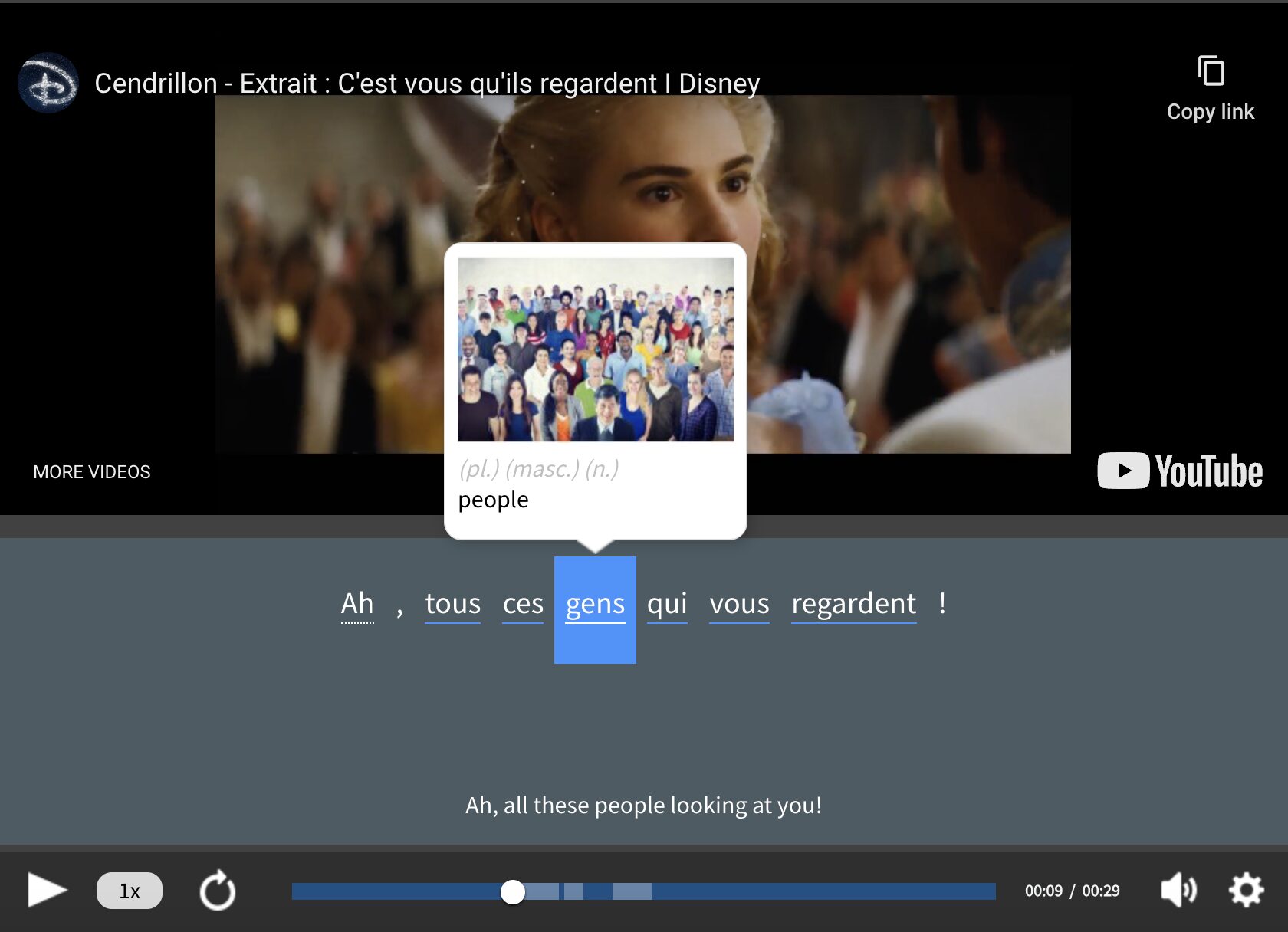En and Y in French: Your Guide to the French Adverbial Pronouns

At first glance, y and en may look like your average French pronouns. But in fact, they act as if they’re adverbs and replace words that denote quantities, qualities, properties and relations. The pronoun y replaces indirect objects following the preposition à (to), and it roughly means “there” in English.
The pronoun en replaces indirect objects following the preposition de (of), and it roughly translates to “some” or “any.” Note also that the adverbial pronoun en is different from the preposition en (in).
Contents
Download: This blog post is available as a convenient and portable PDF that you can take anywhere. Click here to get a copy. (Download)
How to Use the French Pronoun Y
As I previously mentioned, y replaces constructions that include the preposition à, but there’s more to it than that. Read about the various uses and limitations of the pronoun y below.
In place of location nouns
In its simplest use, the pronoun y replaces the indirect object of the verb when it is followed by a noun that is a location.
For example, look at the following phrase:
Vous allez à la bibliothèque? (Are you going to the library?)
In case it’s unclear, la bibliothèque is a location. Now, if you wanted to make a really clear response, you can say something like:
Oui, je vais à la bibliothèque. (Yes, I am going to the library.)
You will notice, however, that the response sounds formal and rigid. No one really talks like that. What we need is to replace à la bibliothèque.
And we’ll do that with the pronoun y. Observe:
Oui, j’y vais. (Yes, I’m going there.)
In place of non-person nouns
Y can also replace à structures that contain non-person nouns. So when a verb takes an indirect object, you can replace that indirect object with the pronoun y.
Check out this example using the noun le livre (the book):
Tu penses à ton livre. (You’re thinking about your book.)
Tu y penses. (You’re thinking about it.)
In place of location constructions
Though the pronoun y is generally used to replace à paired with non-person and location nouns, you can also use it to replace other prepositions so long as they occur before a location noun.
For example, you can use it with phrases that include chez, a preposition often used to refer to being “at” someone’s home, or dans (in).
Elle était chez moi. (She was at my house.)
Elle y était. (She was there.)
Common mistakes
As with all French grammar, the use of the pronoun y is pretty restrictive. So, you cannot use y to replace à + a person, or à + a verb.
For example, it doesn’t make sense to use it in the following ways:
Je réponds à Marie. (I’m responding to Marie.)
J’y réponds.
J’hésite à lire le livre. (I hesitate to read the book.)
J’y hésite.
There are also a number of expressions that have y in them. These include, for example, il y a (there is) and allons-y (let’s go).
It may be confusing for learners to wrap their heads around these expressions and the role that y plays in them, but don’t worry about it! Because these are fixed expressions, you can just take them at face value.
How to Use the French Pronoun En
In the same way that y replaces constructions with à to give the meaning “there,” en replaces ones that use de (of) to give the meaning “some” or “any.” Check out these situations where you should (and shouldn’t) use en.
In place of nouns with de
First and foremost, en can replace nouns that use the partitive article de. The partitive de is the equivalent of saying “some” in English. Check out this example:
Tu as du thé? (Do you have some tea?)
Oui, j’en ai. (Yes, I have some.)
Furthermore, en can replace de and a noun that has an indefinite article (un or une):
Il a besoin d’une boîte? (Does he need a box?)
Non, il n’en a pas besoin. (No, he doesn’t need one.)
In place of quantified nouns
En can replace nouns with quantifiers (i.e., something that gives a quantity or number).
Here’s an example:
J’ai beaucoup de livres. (I have a lot of books.)
J’en ai beaucoup. (I have a lot of them.)
And here’s another example:
Nous voulons quatre livres. (We want four books.)
Nous en voulons quatre. (We want four of them.)
Keep in mind, however, that even though en replaces the noun and de if it’s included, the modifier remains in its place in the sentence. That’s why both beaucoup and quatre remained even when en joined in on the fun.
In place of nouns in set verb expressions
En can replace de and the following noun in situations where de is part of the verb phrase itself.
For example, se souvenir de is a set verb expression meaning “to remember.” Check out this example:
Elle se souvient de ma lettre. (She remembers my letter.)
Elle s’en souvient. (She remembers it.)
Common mistakes
Like y, you cannot use en to replace de + a person or de + a verb.
For example, using it in the following sentences makes no sense. If you say these, a French speaker would look at you like you have brie cheese for brains:
Elle parle de moi. (She’s talking about me.)
Elle en parle.
Je choisis de faire mes devoirs. (I’m choosing to do my homework.)
J’en choisis.
Pronoun Hierarchy in French
Remember those endless rules that plague the French language? Well, the rules regarding y and en don’t stop here.
If speakers use more than one pronoun in a phrase, it has to be done in a particular order. (Talk about being controlling, French!)
In these situations, your direct object personal pronouns come first (me, te, nous, vous), and then come your optional inanimate direct pronouns (le, la, les). Next come your indirect objects (lui, leur), and finally our new friends y and en.
Check it out:
me, te, nous, vous
le, la, les
lui, leur
y
en
So, for example:
J’ai donné du thé à ma mère. (I gave some tea to my mom.)
Je lui en ai donné. (I gave some to her.)
Ways to Practice the French Pronouns En and Y
The best ways to understand the peculiarities of any language are to practice it and hear it being spoken.
In addition to encountering these adverbial pronouns out in the Wild West of French books, movies and television (and you will encounter them often!), there are a number of online tests you can use for practicing y and en in particular.
ToLearnFrench.com offers a quiz to help you master these pronouns (scroll to the bottom). Columbia University has a quiz, too. Even better, and speaking of the Wild West, the University of Texas has two quizzes—one for y and one for en—so you can practice them separately.
Now you have everything you need to get the hang of these two tiny French pronouns.
Time to get out there and practice!
Download: This blog post is available as a convenient and portable PDF that you can take anywhere. Click here to get a copy. (Download)
And One More Thing...
If you like learning French at your own pace and from the comfort of your device, I have to tell you about FluentU.
FluentU makes it easier (and way more fun) to learn French by making real content like movies and series accessible to learners. You can check out FluentU's curated video library, or bring our learning tools directly to Netflix or YouTube with the FluentU Chrome extension.
One of the features I find most helpful is the interactive captions—you can tap on any word to see its meaning, an image, pronunciation, and other examples from different contexts. It’s a great way to pick up French vocab without having to pause and look things up separately.
FluentU also helps reinforce what you’ve learned with personalized quizzes. You can swipe through extra examples and complete engaging exercises that adapt to your progress. You'll get extra practice with the words you find more challenging and even be reminded you when it’s time to review!
You can use FluentU on your computer, tablet, or phone with our app for Apple or Android devices. Click here to take advantage of our current sale! (Expires at the end of this month.)










